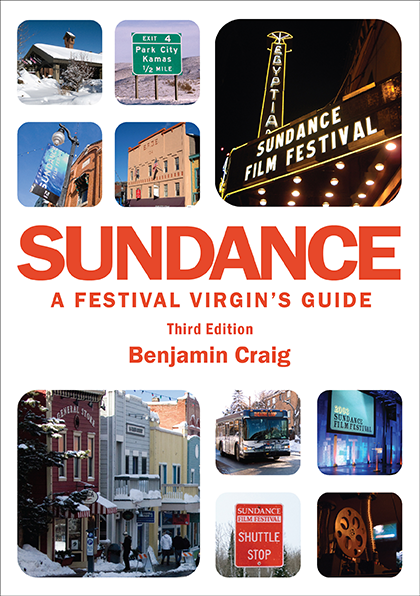History of the Sundance Film Festival
By Benjamin Craig
Second only to the myth that the festival gets its name from a town called Sundance is the myth that Robert Redford started the event. Certainly Redford was involved from the very beginning and he and the Sundance Institute are largely responsible for nurturing the event from relative obscurity to its current status as one of the top film festivals in the world. But the true origins of the festival are rooted in the collision between the state of Utah's arts and commercial needs, predating the foundation of the Sundance Institute.
On the arts side, there was Sterling van Wagenen, a Brigham Young University film school graduate; on the commercial side, Utah State Film Commissioner John Earle. Together with a small group of associates, they decided it would be an excellent idea to launch a film festival for the state - the Utah/US Film Festival. Van Wagenen and Earle's vision for the festival was threefold. Firstly, to hold a national event which would attract more filmmakers to Utah (one of the core mandates of Earle's post). Secondly, to present a retrospective of well-regarded American films, supported by high-profile panel discussions with filmmakers, critics, and others (or as former festival program director Lory Smith puts it in his book Party in a Box, "... to show old movies and have famous people talk about them"). And lastly, to start a competition where films made outside the Hollywood system could be showcased in the hope of bringing them to a wider audience.
To oversee the event, the management of the fledgling festival tapped its network of friends and colleagues to put together a board of directors. A local Utah resident since the late 1960s, Robert Redford became involved as the festival board's inaugural chairman through Van Wagenen (at the time, Redford was married to Van Wagenen's cousin Lola). Funding for the festival came predominantly from Earle through the Utah Film Commission, but it also relied on industry sponsors and donations from wealthy friends of those involved.
Originally, the event was simply going to be called US Film, but it quickly picked up the "film festival" mantle as the organisers started securing sponsors and films. The word "Utah" was an eleventh-hour addition, sparking minor panic amongst those charged printing the festival programs. The change was made after concerns were raised that a 'U.S. Film Festival' might suggest to local Utahans that the event was from out of town rather than home-grown.
Ladies and Gentlemen, We Have Lift-Off
The first Utah/US Film Festival kicked off in Salt Lake City in September 1978 with an impressive retrospective of classic films, including "Midnight Cowboy", "Mean Streets", "Deliverance", "A Streetcar Named Desire", and "The Sweet Smell of Success". Having Redford's name associated with the festival helped the young team garner interest from studios and distributors who would have probably otherwise not returned their calls. In addition to the high-profile films, eight independent features from largely unknown filmmakers were screened in the inaugural competition: six competitive films plus two 'honourable mentions' added at the last minute.
At the close of the festival, those in attendance almost wholeheartedly agreed that the event had been a success. The crowds had turned up - with some shows attracting lines around the block - and a handful of high-profile figures from the film industry had taken part in the filmmaker discussions. Rather curiously, the independent films in competition were more successful at the box office than most of the retrospective films. However, as the dust settled on the inaugural Utah/US Film Festival, it became apparent that all was not peachy.
In their enthusiasm to get the festival off the ground, the organisers had managed to close the books on the 1978 festival with a debt to the tune of $40,000 - almost one-third of the entire budget. But ironically, it was this debt that would become one of the main factors which encouraged the festival's continued existence. Creditors realised that the only possible way they could recoup their investment was through ticket sales for another event.
Get Your Copy Now

The essential handbook for filmmakers, film fans, and film industry professionals looking to attend the Sundance Film Festival. Available in paperback and digital formats.
Find Out More >
